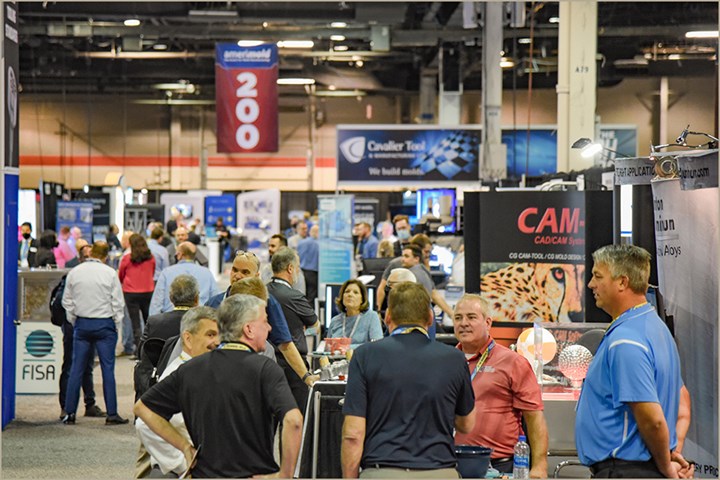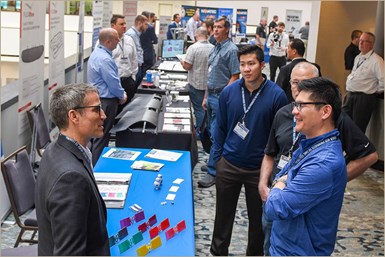Tools of the Trade: Maximizing Trade Show Sales – Lead Qualification
You’ve carefully scheduled the right show, the booth looks great and people are filling the hall. Now what?
#leadgeneration
Part 1 of 2-Parts
By Mark Semmelmayer, CBC
Chief Idea Officer
Pen & Inc. Marketing Communications

My friendship with Maralah Rose-Asch, editor and publisher of this “book,” goes back 30 years. We met as Board members of the Business Marketing Association (BMA). We’re both Crain Award recipients and inductees into the Business Marketing Hall of Fame.
More importantly, although old enough to know better, we still have a passion for effective business to business marketing and sharing our experience to benefit younger and newer B2B practitioners. Sadly, not much is taught about B2B in college marketing curricula. We do what we can to fill the gaps.
Our last conversation turned to trade show lead follow-up for sales success. Could I write on that? As a veteran of almost countless B2B expos, in many different markets. Yes, Maralah, I can. But in two parts.
Trade show sales success needs two things. Effective lead qualification and effective lead follow-up. Trade show sales success is a tango that needs both elements to be in step. This blog is about lead qualification.
No doubt, trade shows are a key part of B2B marketing. They’re also a significant investment. Maximizing sales results and ROI are important. The first step is making sure you’re meeting the right people and setting them up for follow-on.
Anyone can generate lots of leads at a show. Give away a premium item, have a drawing and you’ll scan leads until your heart’s content. But are they good leads? In most cases, probably not.
I’ll use the analogy of a proximity fuse. Before World War II, every army air force tried to shoot each other down with lead bullets or exploding shells with no real guidance. It’s estimated it took as many as 100,000 shots to down a single aircraft. Not very efficient.
In 1942, the US and Britain worked together to develop the proximity fuse. Basically, the shell used a primitive radio wave sending/sensing unit. When the sent/received signal interval shortened as it neared the target, boom. Much more efficient.
The core of that analogy? Being on the right wavelength. At trade shows, your rep is the sender. You need to make sure your customer, the receiver, is on the same wavelength, to qualify and confirm mutual interest. Establish that, and lead follow-up has a far greater chance of success.

Before getting to steps I think essential in qualifying a lead, let’s talk about staffing your booth. Even though we call this B2B marketing, it’s still a person-to-person sales process. Personally, I believe there’s no such thing as too many trained sales and marketing folks in the booth. One-on-one interaction with a prospect, handled effectively, sets the stage for successful follow-up.
In an ideal world, you’d take the order, right then and there, capitalizing on the immediacy of show interactions. But, in B2B, that’s not often possible. Pity! So, let’s go on to those things needed to effectively qualify a lead for follow-up.
- Pre-target: Without a doubt, you have a good idea of the prospects you want to talk to. Use available communication channels to invite them to see you at the show. Setting specific appointment times when you can meet one-on-one is a great strategy. Start creating a relationship.
- Booth Training: Train sales and booth staff to engage visitors in meaningful talks about what they want/need. Have enough reps to interact, not just scan badges.
- Target Profile: Make sure booth staff knows what/who you’re looking for. Before scanning their badge make sure to . . .
- Ask Qualifying Questions: Have a list of questions containing key indicators.
- Capture Relevant Information: Document their answers, together with preferred contact information, in real-time. Make sure you annotate data with notes on exactly what the buyer is looking for, and get the information ported to the appropriate rep.
- Get over credit taking: Yes, sales is commission based, and rep self interest is a constant factor. That said, shedding that mindset can be invaluable. Whoever establishes the contact relationship with the prospect should be the follow-up person. Worry about assigning commission credit later. Sales isn’t a department . . . it’s what a company does to stay in business.
- Establish a firm follow-up date/time: Everybody’s busy. Get on the prospects calendar so they know when they’ll hear from you again and about what. Staying in the sender/receiver/wavelength model maximizes communication effectiveness.
Final analysis: Trade shows are the most personal of customer interactions besides a direct sales call. Treat it that way. Capture the information, and personal contact details needed to go to the follow-up phase. More on that in Part 2 of the blog, trade show lead follow-up.
Stay tuned.
Need more information?
Mark Semmelmayer, CBC
Chief Idea Officer
Pen & Inc. Marketing Communications
Saint Simons Island, GA
770-354-4737
LinkedIn
About the Author
Mark Semmelmayer, CBC
Mark is a past international chairman of the Business Marketing Association (BMA), the 2015 recipient of BMA’s prestigious G.D. Crain Award and an Inductee into the Business Marketing Hall of Fame. A 40-year B2B marketing pro, including 32 years with Kimberly-Clark, he’s the founder and Chief Idea Officer of Pen & Inc. Marketing Communications, a consultancy in Saint Simons Island, GA.
RELATED CONTENT
-
10 Types of CTAs You Need to Have on Your Website
To get the most out of your Calls To Action, you'll need to make them engaging, hard-to-miss, and straightforward.
-
Lead Generation Ideas for Your Marketing
Looking for new ways to generate leads for your business? The Giraffe Social Media team compiled a listing of five top lead generation sources which could help you better target your outreach and promotional efforts.
-
Get the Most from Pre-During-Post Trade Show Exhibiting
Trade show exhibit managers may increase their role in their company by implementing industry proven changes and managing their entire trade show program.


